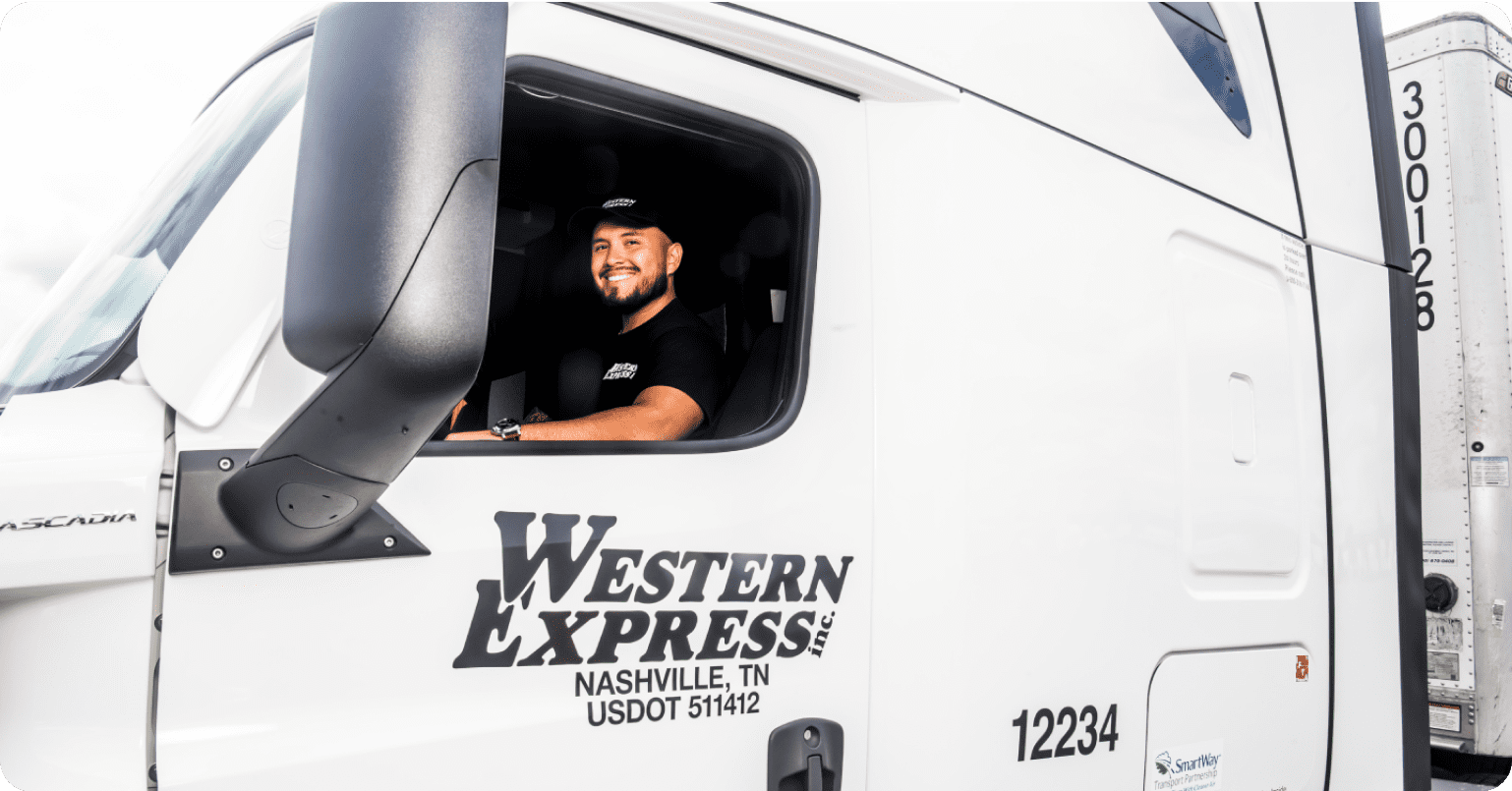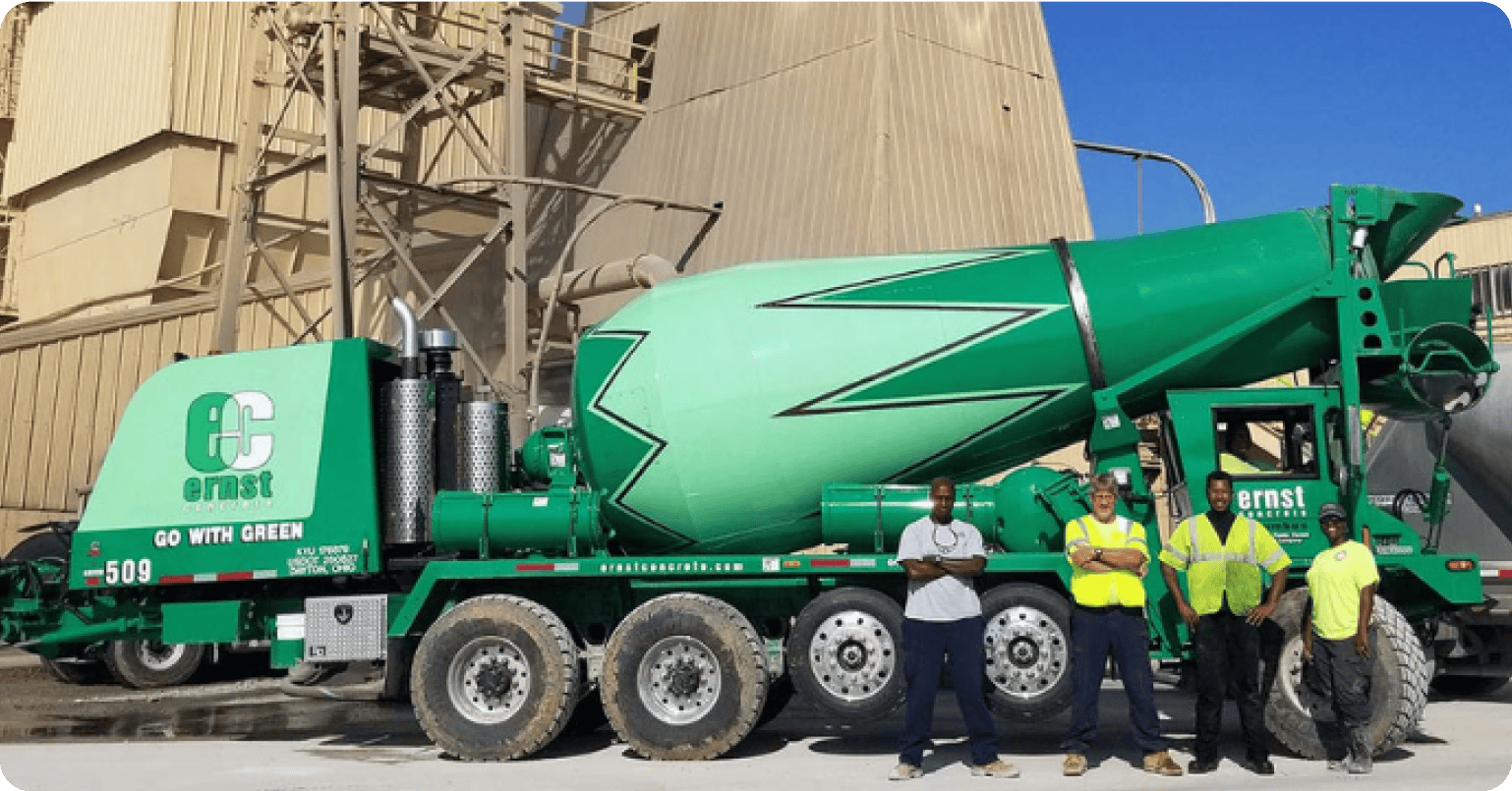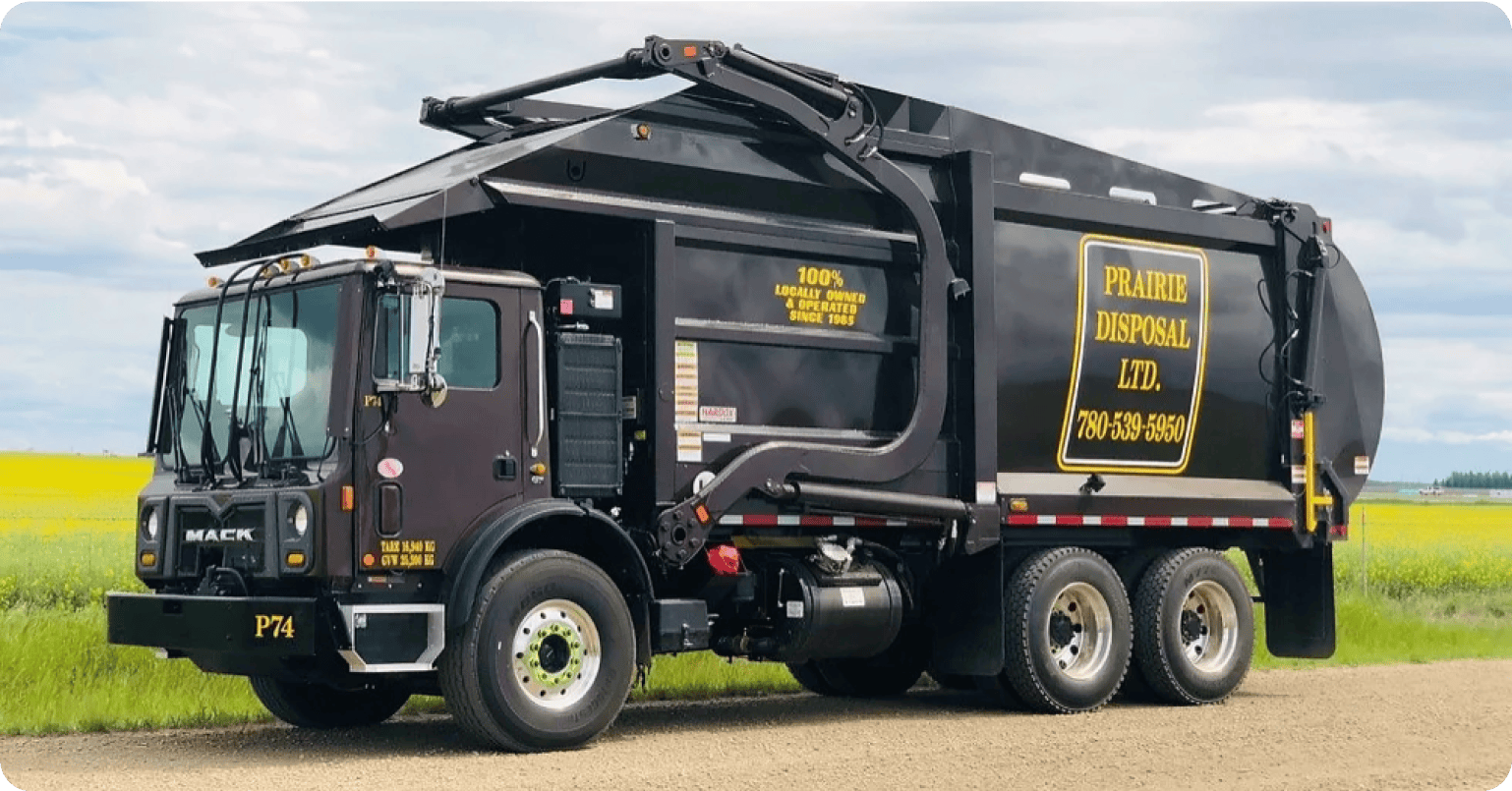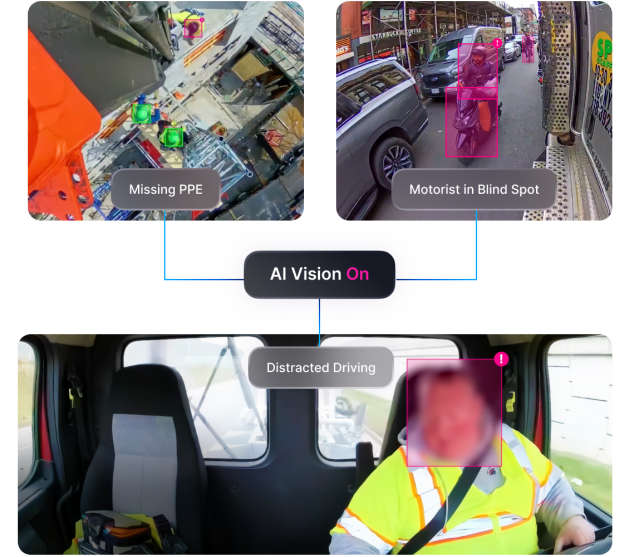- Introduction
- The basics: The different types of AI
- Visual AI in action: Impact on road safety
- Act now: How to get the most out of computer vision
- The future of computer vision
Introduction
While AI’s potential for the digital economy garners much attention, it is the physical economy – encompassing businesses that build our infrastructure, grow our food, transport goods, and pipe energy into our homes – that stands to gain even more. These critical industries, such as transportation and logistics, construction, energy, field service, delivery, and more, often struggle with a lack of visibility across their operations due to fragmented data and disparate tools. They also face challenges that are impossible for humans to do at scale. As a result, leaders find themselves managing crises, fighting for control and efficiency of million-dollar fleets and equipment, and dealing with record-high accidents and workplace injuries.
Motive surveyed 1,000 physical operations leaders for the Physical Economy Outlook 2024 and found that many are betting on AI to transform their operations in 2024 and beyond. In particular, leaders are counting on AI to help them monitor assets and vehicles, optimize resources, and make data-informed decisions. Seventy-six percent of leaders want to use AI to gain critical visibility across their physical operations, and 71% want to use generative AI. But only 25% are already using AI, signifying a massive gap in adoption and opportunity for automation. The survey results clearly show that physical operations leaders are embracing AI, with 69% recognizing its potential to positively impact their roles.
While much of the news focuses on large language models (LLM) and the impact of generative AI on knowledge work, this guide dives into computer vision because it is the least understood, but most valuable form of AI for the physical economy. It has the ability to address real-world challenges and deliver real results. Computer vision can help save lives and money, and it holds vast potential to achieve even more.
This guide will cover:
- The basics: What exactly is AI, generative AI, and what’s the difference between LLM and computer vision?
- Visual AI in action: Examples of capabilities and real-world use cases.
- Act now: Here are the steps you can take NOW to prepare your organization to embrace AI: the people, processes, and technology you need to get the most from computer vision.
- The future of AI: The enormous implications of computer vision and generative AI on physical operations for 2025 and beyond.
The basics: The different types of AI
2023 was the year AI went mainstream. Thanks to powerful AI-driven virtual assistants such as ChatGPT, AI was no longer the stuff of science fiction or academia; it could be used by everyday people to solve everyday problems. While the general public became more comfortable with AI, some saw it as the latest fad that was sure to fade with time. The intricacies of the technology – and its capabilities – eluded most.
So, what is AI? What types of AI exist and how are they used? Answering these questions could be its own guide but here are some basics that will help you going forward:
AI (Artificial Intelligence)
AI refers to the simulation (or imitation) of human intelligence in machines, enabling them to perform tasks that typically require human intelligence. This encompasses various techniques such as machine learning, natural language processing, computer vision, and deep learning systems. AI finds applications in numerous fields, including virtual personal assistants like Siri and Alexa, recommendation systems on platforms like Netflix, Amazon, and Spotify, and autonomous vehicles that navigate and make decisions based on their surroundings.
Large Language Models
Large language models are sophisticated AI models trained on vast amounts of text data to understand and generate human-like text. These models, such as ChatGPT, excel at natural language understanding and generation tasks, exhibiting impressive capabilities in text completion, translation, summarization, and question-answering. They find applications in content generation for writing assistance tools, chatbots for customer service, and aiding in language translation services.
Computer vision
Computer vision involves the development of algorithms and models that enable machines to interpret and understand visual information from the surrounding environment. Computer vision performs perception tasks such as object detection, image classification, facial recognition, and image segmentation. Applications of computer vision include detecting unsafe driving behaviors or road conditions, where systems identify and track objects on the road or alert drivers to risky actions. It also includes surveillance systems that monitor and detect anomalies at job sites or in public spaces and medical imaging analysis to assist in diagnosing diseases from X-rays and MRIs.
Generative AI
Historically, the term AI has often been associated with predictive AI, which is used to analyze patterns and make predictions. Netflix’s content recommendations, or Spotify helping you discover new music, are examples of predictive AI. Generative AI goes beyond predictive AI by creating new content that looks and sounds as realistic as existing real-world examples. It’s like teaching a computer to write a story or make a picture similar to the ones it’s seen before. Generative AI models learn the underlying patterns and distribution of data to produce realistic outputs. Examples include text generation models like ChatGPT and image generation models like DALL-E, which can create high-quality images or videos of human faces, animals, or other objects.
Generative AI has the ability to reshape how we develop AI-driven products for challenging and dangerous use cases in the physical economy. This often includes unsafe scenarios such as a deer running into the road, equipment failure on a construction site, or rocks sliding down a hillside toward a vehicle. These are very challenging and dangerous to accurately replicate for the sake of creating training data sets.
Visual AI in action: Impact on road safety
AI is everywhere, from your Spotify playlists to metering lights on highways. Computer vision, while newer, is also widely used because it can visually verify many things, like analyzing medical images, detecting defects in manufacturing processes, and preventing accidents.
Computer vision has real benefits for the safety, productivity, and profitability of businesses with commercial vehicles. Motive’s AI Dashcam, for example, accurately alerts to 81% of unsafe driving behaviors and distracted driving, alerting drivers and managers in real time to prevent accidents before they happen. Some customers have cut at-fault accidents by up to 91%, saving businesses millions of dollars on insurance costs, legal fees, medical bills, settlements, and other accident-related expenses.
While the impact is massive, AI is still underutilized. In Motive’s 2023 State of Safety report, less than a quarter of respondents said they use AI-powered cameras. Roadways remain deadly, with nearly 43,000 fatalities in 2022.

Using AI-powered cameras can reduce risk, improve visibility, and help prevent accidents. With sideswipes and rear collisions causing more than 33% of fatal crashes and 44% of crashes with injuries, Motive’s AI Omnicam, when paired with the AI Dashcam, provides a 360° field of view around the vehicle, allowing protection and visibility from all sides, significantly enhancing safety. It can also be used to monitor blind spots, which is critical in urban environments. 2023 was one of the deadliest years for pedestrians and cyclists in North America.
Computer vision delivering real-world results

Western Express, an asset-based truckload carrier with more than 3,600 vehicles, faced significant safety challenges within its fleet operations. With a heavy emphasis on safety and technological innovation, the company sought to address the root causes of accidents, primarily speeding and driver distraction, including fatigue and mobile phone usage.
After a comprehensive evaluation process, Western Express selected Motive for its AI-driven platform and advanced dash cameras. “We’re already seeing significant improvements in keeping our drivers safe and prepared. Motive’s AI features bring our ability to alert unsafe conditions and proactively coach to a new level, keeping our drivers safer and our liability lower,” says Daniel Patterson, director of safety at Western Express.
Taking computer vision beyond driver safety
Computer vision can be trained to perceive many different things, making it useful for a wide range of applications beyond transportation. It can help you see and understand what’s happening anywhere you have a camera. This can bring significant benefits to safety and efficiency beyond fleets of vehicles, with wide applications across all sectors of the physical economy, including construction, oil and gas, field services, passenger transit, waste services, trucking and logistics, delivery, agriculture, food and beverage, and the public sector.
Job site safety
There were 5,486 fatal work injuries in 2022, according to the Occupational Safety and Health Administration (OSHA). Of those deaths, 738 were due to contact with objects and equipment, the most for this event category since 2018. Workers are often required to wear personal protective equipment (PPE) to improve safety and mitigate the risk of injury, but not everyone follows the rules.
According to OSHA, correctly wearing PPE can prevent 37.6% of occupational injuries and illnesses. In the construction industry, which has a high rate of accidents and injuries, improper or inadequate use of PPE can significantly increase the risk of accidents. For example, 12% of occupational injuries that result in total disability are caused by employees not wearing the right PPE.
The video below illustrates how computer vision can be used to detect PPE like hard hats and reflective vests, and ensure workers are complying with job site safety protocols. In the video, an AI-powered camera – Motive’s AI Omnicam, in this case – is mounted on top of a crane to observe the workers below. The computer vision model is trained to detect hard hat usage and alert managers if a worker is seen not wearing the appropriate PPE. It’s a relatively simple task for computer vision, but an incredibly hard task for a manager who can’t personally monitor a job site 24/7.
Now, with the help of computer vision systems, managers can take immediate action to improve worker safety, reduce risk, and reduce liability. This delivers significant benefits, including fewer accidents and savings on medical bills, settlements, and fines.
Cargo and equipment security
It’s costly and impractical to hire people to watch your yard or trailer full of cargo around the clock. Thieves know this and are taking advantage of the situation. According to CargoNet, cargo theft saw a 33% year-over-year increase in the second quarter of 2024, with the most common theft locations being warehouses and truck stops.
Cargo, vehicle, and equipment theft is a problem across North America, but it’s more prevalent in countries like Mexico, where a vehicle is stolen every 38 minutes.
The stakes are high. People and property are at risk. However, computer vision has the potential to reduce that number significantly. Computer vision can be used to monitor vehicles, cargo, equipment, and job sites and alert you if someone attempts unauthorized access.
The video below shows computer vision detecting cargo theft in progress. In this example, the driver and manager would be immediately notified so they can take whatever action they deem necessary. CargoNet estimates that more than $68 million in freight was stolen across all industries between April 1st and June 30th of 2024. So, gaining visibility and being alerted to unauthorized access in real time has the potential to save businesses millions of dollars.
Compliance and quality assurance
Video is proof. Computer vision can capture video proof, so businesses can be confident that proper procedures are followed and work results in high-quality outcomes. Computer vision can even be used to confirm that customers adhere to agreed-upon rules.
In the video below, computer vision is being used to detect and document overflowing trash bins. When clients overfill their bins, it reduces throughput and causes delays. In some cases, drivers may have to end their routes early to dump their load. Using computer vision allows waste services companies to document overfilled bins and automatically send notifications to non-compliant homeowners. Workflows can be built on top of these computer vision models, helping companies automate actions like issuing warnings or fines.
Computer vision can go beyond helping companies with enforcement. It can ensure that a service or product meets standards. Many companies use the Motive AI Omnicam and AI Dashcam for quality assurance. The following section details real-world examples of how computer vision is being used to monitor and improve customer service.
Computer vision delivering real-world results

Ernst Concrete, a family-owned business specializing in ready-mix concrete, uses Motive to manage customer service issues. Video from Motive AI Dashcams highlights the texture of the concrete being poured. “It’s like pancake batter. It’s called the slump in concrete. The videos give feedback to our quality control team so they can analyze the product and address any customer service issues about delivery or quality,” says Paul Fly, director of risk and safety at Ernst.

Prairie Disposal, a leading waste management service in Alberta, Canada, caters to a diverse clientele across commercial, residential, and industrial sectors. Prairie is reaping the benefits of the Motive AI Omnicam, which empowers Prairie to quickly address and resolve customer complaints regarding service deliveries. The multiple camera angles help Prairie answer important questions like whether a bin was available for pickup or had been emptied. “What’s so nice about the AI Omnicam, especially on the residential side, is if somebody says, ‘You didn’t pick up my bin,’ we can say, ‘Well, it wasn’t out there and we have video proof that it wasn’t there,’” says Tim Sumach of Prairie Disposal.
Child safety
What’s more important than protecting children? Something as daily and mundane as getting on and off school buses can become dangerous for children, with fatalities happening each year. Computer vision is being adapted to help reduce risk and protect children. Motive is partnering with school bus operators to identify when a vehicle has violated the stop arm, capturing an offender’s license plate on video. In the example below, an AI-powered camera paired with highly accurate computer vision models identifies when a driver fails to stop. Using a high-resolution image sensor, it captures relevant details like license plate information while an object is in motion. This application has the potential to deter drivers from violating stop arms and protect children as they enter or exit buses.
Act now: How to get the most out of computer vision
Computer vision can have a dramatic effect on your business. To get the most out of it, adjust your internal operations to prepare and choose a computer vision partner that prioritizes three things:
- People
- Processes
- Technology
People
When choosing a computer vision vendor:
- Select one with a full-stack machine-learning team with diversity in expertise, experiences, and backgrounds.
- Ensure they design AI solutions that take into account the complexity and intricacies of your problems and applications.
- Check to see if the vendor actively communicates with customers to understand their unique challenges and can quickly develop models to address those needs.
How to prepare:
- Assign a dedicated person or team to manage your computer vision solution, ensuring its optimal use and discovering new applications. For instance, AI-powered cameras purchased to monitor job sites for PPE usage could also be used to protect against equipment theft. A team focused on maximizing computer vision benefits is invaluable.
Processes
When choosing a computer vision vendor:
- Inquire about their data validation and model accuracy.
- Ask if they have an annotation team to ensure precision and avoid false positives.
- Select a team that only uses high-quality data streams and validates the accuracy of their models.
How to prepare:
- Create processes and workflows based on the insights computer vision can provide. If you are using computer vision to detect overflowing residential trash bins, for example, establish what happens when an event is detected. Is an email automatically generated and sent to the homeowner? Is a fine issued? Who internally needs to be notified? Build out the processes, automate manual work, and gain time back to do other critical tasks.
Technology
When choosing a computer vision vendor:
- Look for high-definition, durable camera systems and powerful processors specifically designed to run visual detection AI models.
- Conduct head-to-head trials, seek recommendations from trusted colleagues, and look for unbiased reviews or third-party benchmarking studies.
Do your due diligence. Don’t settle for promises – insist on proof. This technology is an investment, so ensure you choose the right partner.
The future of computer vision
AI has the potential to be transformative for the physical economy and the industries that fuel our everyday lives. What if generative AI could mitigate the impact of a wildfire by predicting its path and alerting residents sooner? Can predictive models around energy use be created to combat climate change and create more sustainable cities? Can shipping routes be improved by faster and more effective alerts of changes in weather or road conditions? How about through fuel-efficient routes? These are questions that the use of AI can help.
The potential for computer vision is unlimited. How will you use it?
To learn more about how computer vision can improve the safety, productivity, and profitability of your operations, visit gomotive.com.




